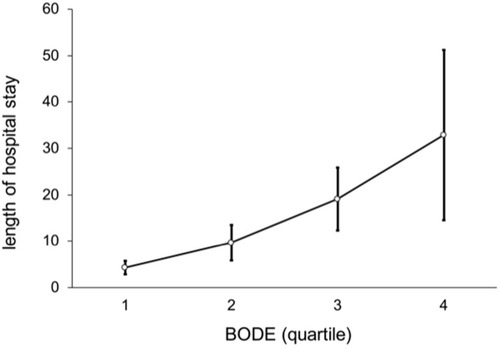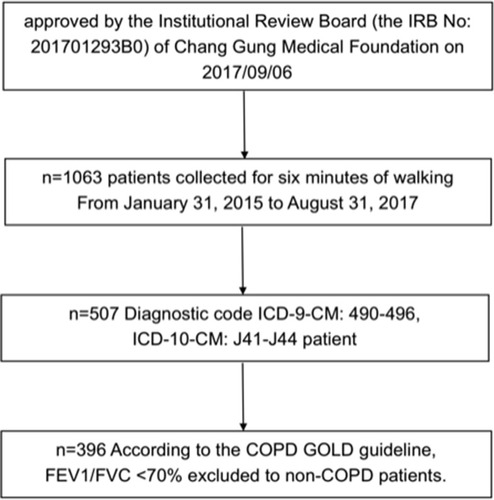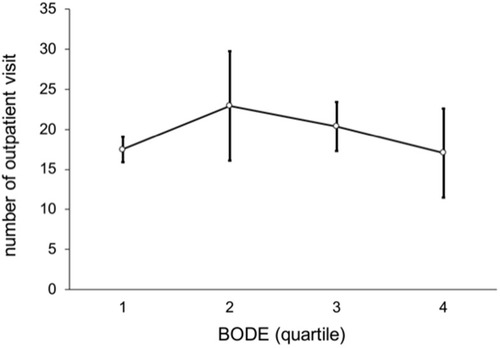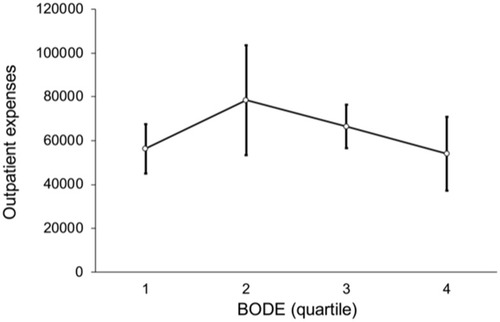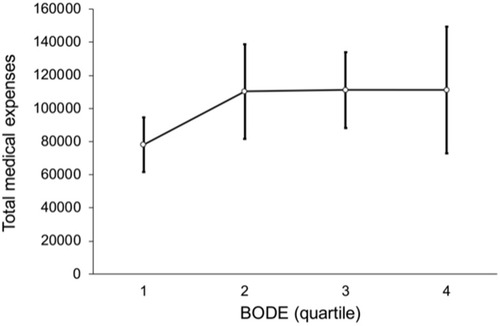Figures & data
Table 1 Baseline Characteristics of COPD Patients Included in the Study (n=396)
Figure 2 Line of positive correlation between BODE quartiles and Charlson comorbidity index (p < 0.001).
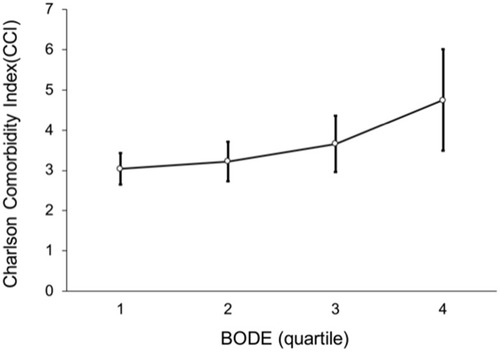
Figure 3 Hospitalization expenses by BODE quartiles for the high CCI and low CCI groups. Patients with high CCI level had higher hospitalization expenses than those with low CCI level after adjusting for BODE quartiles (p < 0.001).

Figure 5 Linear trend of number of hospitalizations by BODE quartile (p < 0.001).
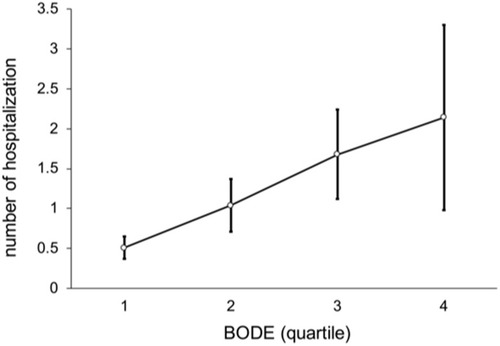
Figure 6 Linear trend of length of hospital stay by BODE quartile (p < 0.001).
